
Can you imagine life without potatoes?
No hash browns or fries, nor a baked spud or a bowl of garlic mashed potatoes in sight.
Not even a potato wedge with sour cream, chives and bacon. Notice that all of these ingredients come from farms, not just the store. They are foodstuffs you can grow all on your own if you have the land. Chives can even thrive in containers on your kitchen counter.
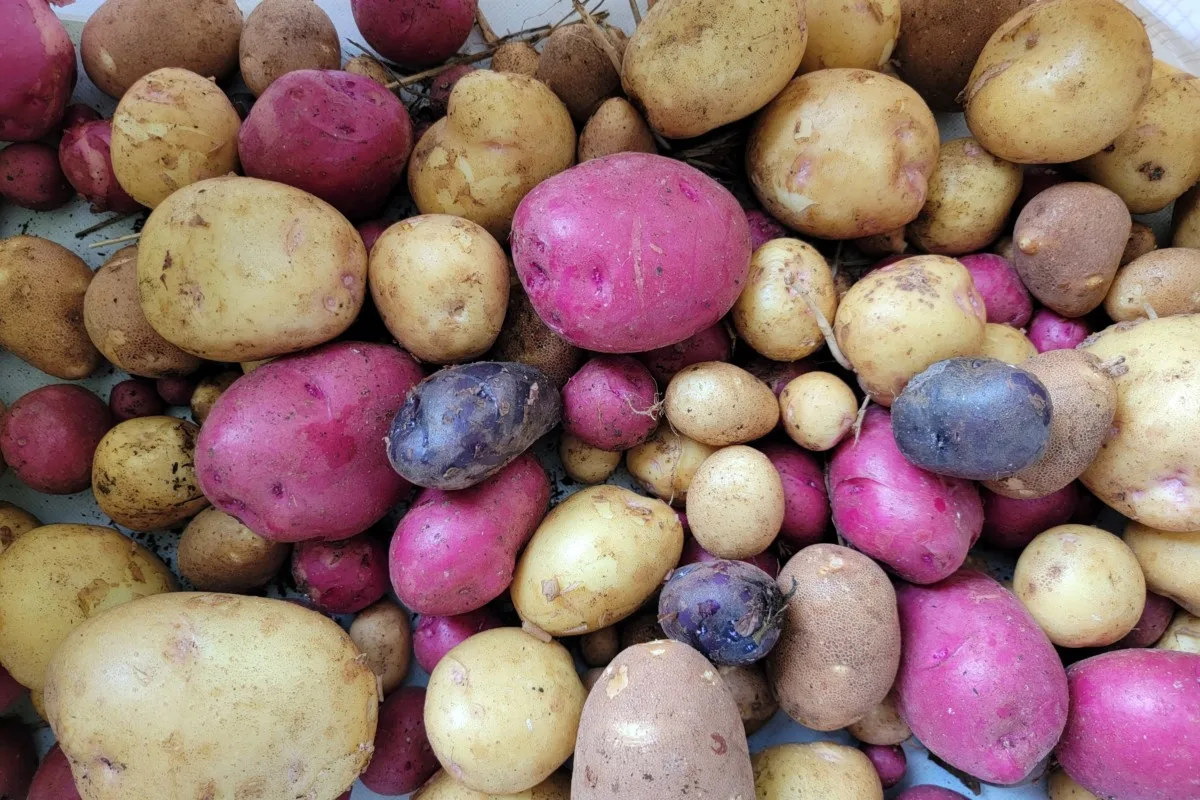
But it takes the humble potato to bring everything together.
Why Plant Potatoes?
Potatoes may be one of the cheapest items at the store, though you may want to consider what they’ve gone through before reaching your plate.
Conventionally grown potatoes, according to this article, are more often than not grown with the presence of pesticides, not to mention fungicides.
Potential dangers associated with these chemicals are that some are known or assumed carcinogens, others are hormone disruptors, neurotoxins or reproductive toxins. As a root vegetable, potatoes absorb all that is sprayed on them as pesticides, herbicides and insecticides make their way into the soil.
It sheds a very different light on potatoes fried in lard in a cast iron pan.
We are not eating what our great-grandparents ate.
But we can – when we take back the opportunity to grow potatoes in the backyard garden.
What you need to know, is that planting potatoes doesn’t have to be back-breaking work.
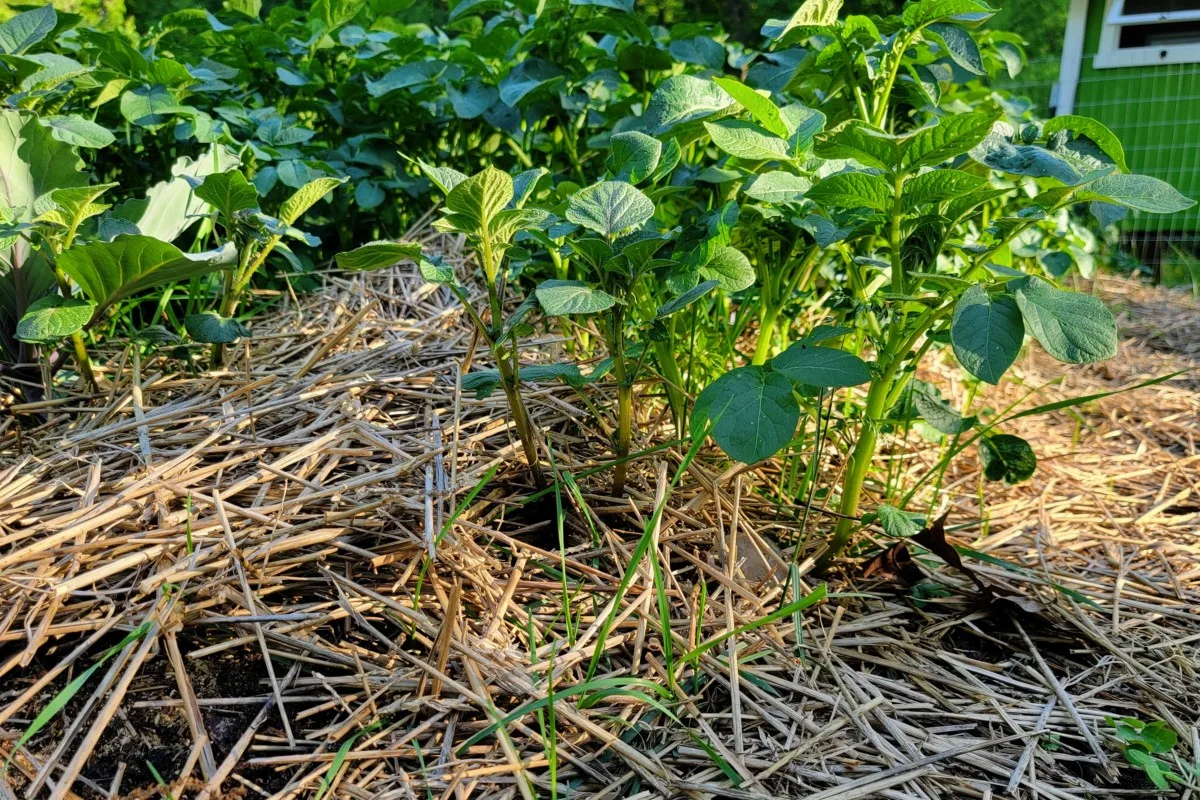
You don’t need to spend hours tilling the soil or hoeing long rows. Heck, you don’t even need to dig them out of the ground, but we’ll get to that exciting bit later.
In this modern world, you can now grow potatoes in raised beds.
With this method, you get to control what sort of soil they are grown in, plus you can enjoy multiple kinds of potatoes that you’ll never find at the supermarket. That’s another reason you should definitely grow your own, for the vast varieties alone.
You can also grow potatoes in a 5-gallon bucket. Or a woven basket, or a burlap sack, even a straw bale.
As you can see, many of these growing options are cheap themselves. So long as you have access to a little bit of soil, compost and chitted seed potatoes, you are off to an excellent start.
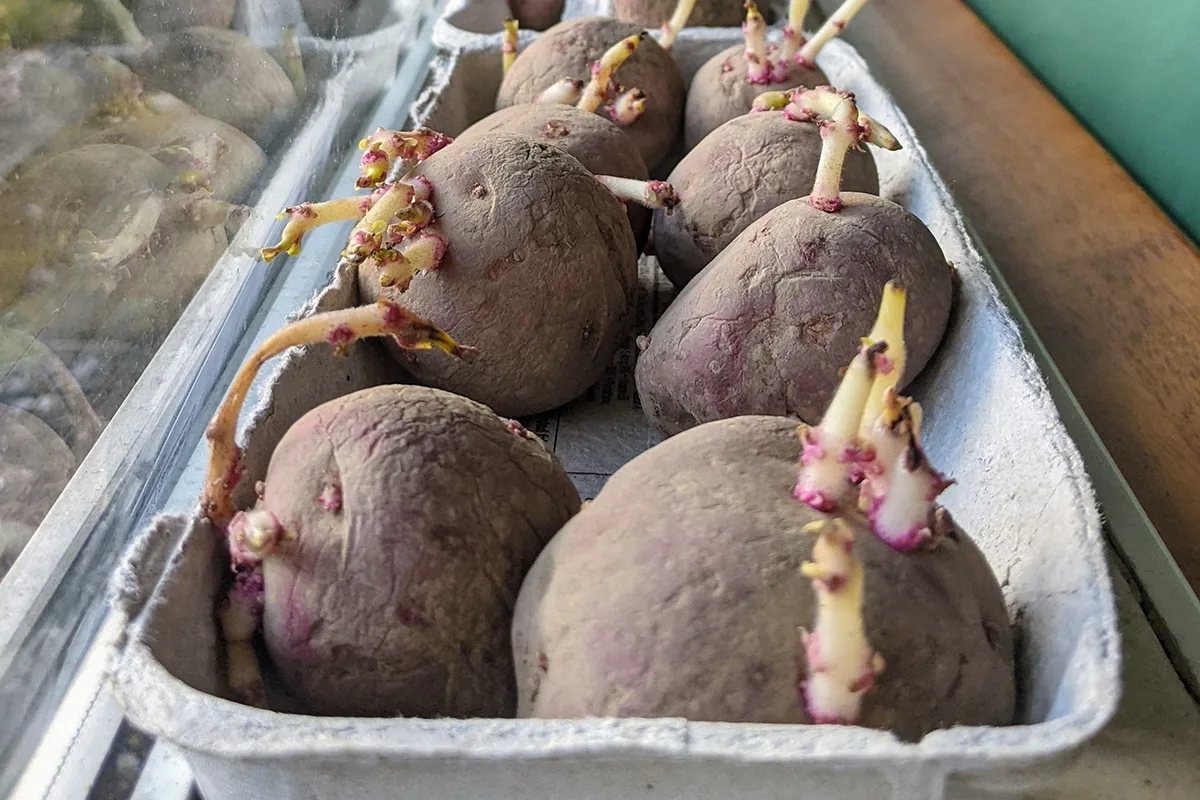
2 more quick reasons to grow your own potatoes.
Potatoes can be a survival crop. When grown organically, you can get a lot of nutrients out of them, especially when you eat the skin.
Also, potatoes are easy to store, whether it be in the cellar, or the freezer.
Straw For Mulching Potatoes
A bumper crop of spuds starts with good seed material. Beyond that, you’ll need to decide whether raised beds, buckets, grow bags, or the good old ground is what you need.
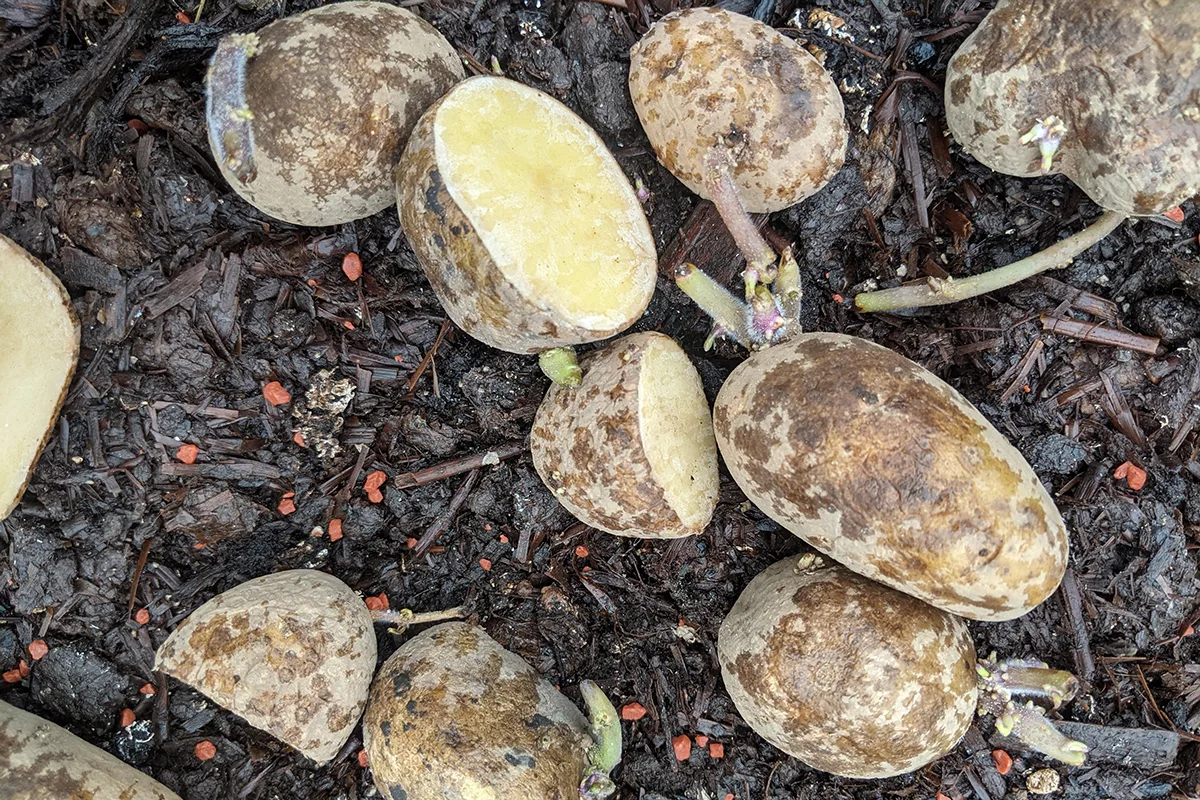
Mulching potatoes works the same way with all of the above, so there’s no need to worry about materials.
However, one thing you should be concerned about is when you apply the mulch.
For example, let’s say you are digging your potatoes into the ground as most gardeners do, plant them approximately 3″ deep. Then go ahead and blanket mulch over your spuds before they emerge from the ground. This may delay the growth of your crop as it prevents the soil from warming up quickly.
An easier way to use straw as mulch for your potatoes.
Similar to no-dig gardening, there is an easier way to plant potatoes. Simply put them on top of the soil, making sure that they touch the ground. Top them with an 8″ thick layer of straw and let them grow as they normally would, being careful not to step over the planted area.
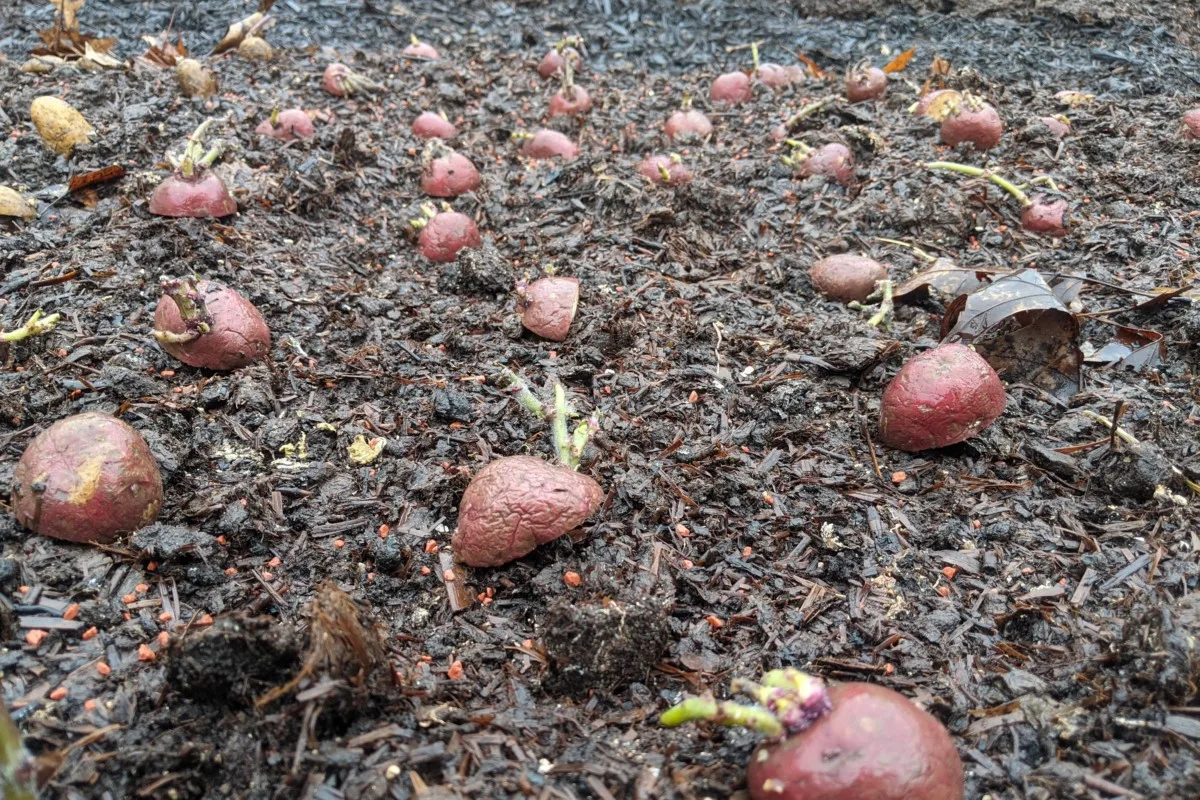
When harvesting time comes around, gently rake back the mulch and harvest the potatoes by hand. There is no need for a spade, therefore you won’t damage the potatoes.
People who use this method, recommend loosening the soil before planting, especially if you are gardening in heavier soil.
Use your mulch efficiently.
Digging is a lot of work, though mulching can take serious time and effort too. It’s sometimes difficult to get it down evenly, plus it takes a lot of material if you are attempting to grow a ton of potatoes.
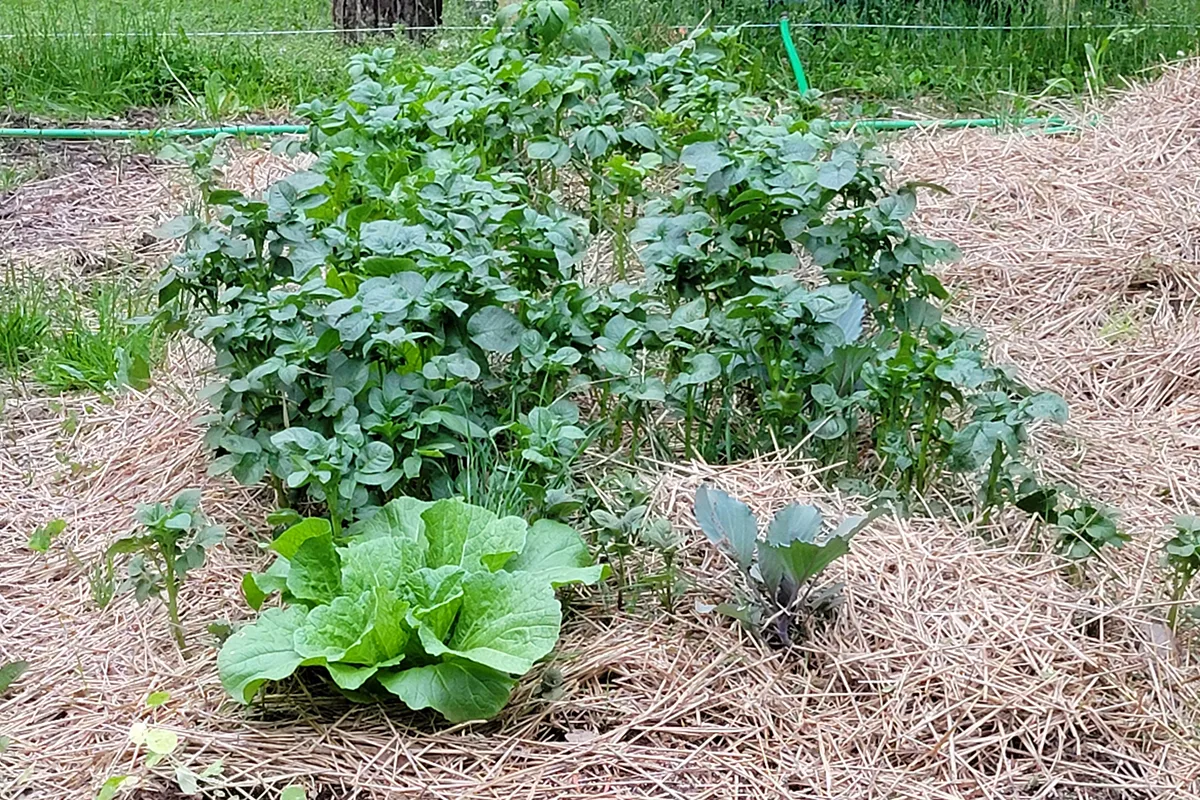
Rather than planting in rows, mulched potatoes are best planted in small plots (6′ x 15′) to minimize the use of mulch.
To grow your potatoes in mulch, use 8-12″ of the following materials:
- shredded leaves
- leaf mold
- hay
- straw
If you are combining different mulch materials, timing is essential. Potato shoots can more easily push themselves up through straw, but it’s harder with grass clippings and leaves on top.
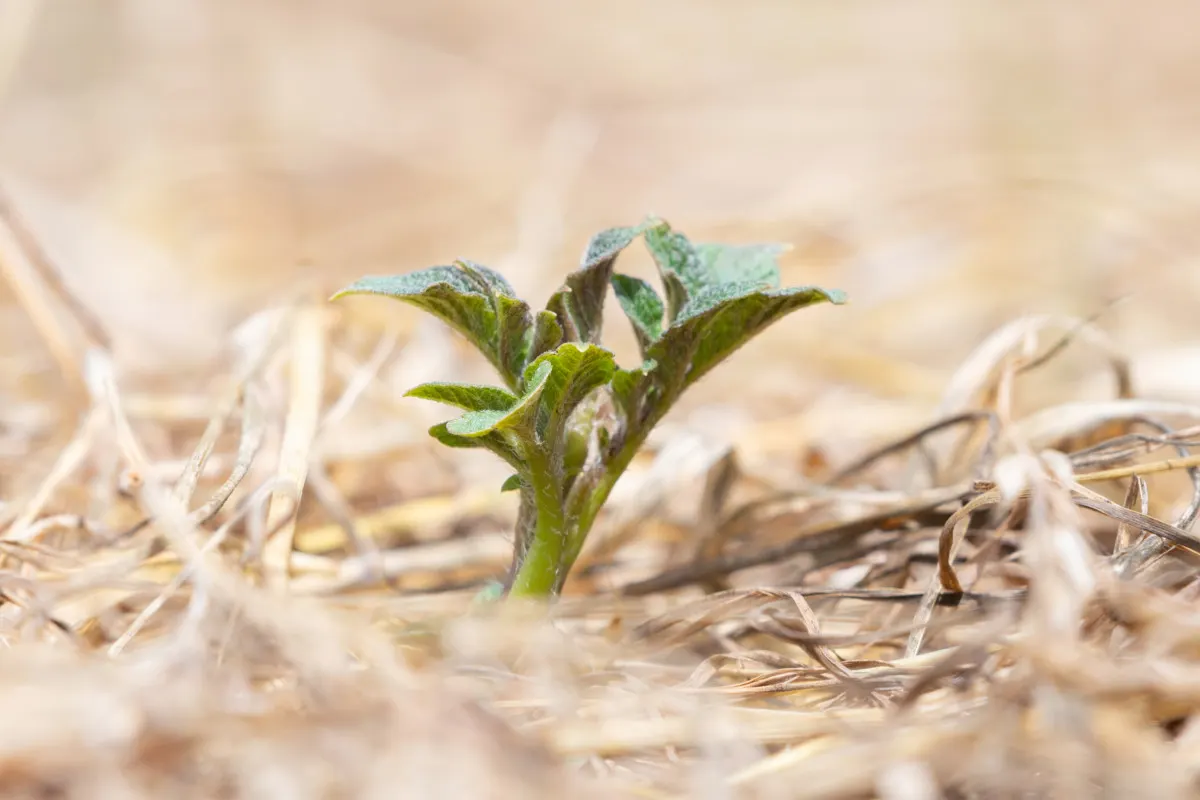
Start with a generous layer of straw, and when the shoots are strong enough, go back and add another layer for extra moisture retention and weed control.
You can also add comfrey leaves to the layers of mulch, which are rich in potassium.
Use Grass Clippings To Mulch Potatoes
With a medium to large lawn that needs to be mowed, again and again, you’ll likely have a ton of “waste”. As soon as you cut the grass, it grows even stronger, to the point where you don’t know what to do with all those grass clippings.
Naturally, you could put those excess grass clippings on your compost pile to heat it up. If you don’t have a compost bin, the second best is to use it as mulch in your garden. Grass clippings are particularly beneficial to your potatoes.
Instead of hauling away your grass clippings as yard waste, keep them much closer to home.
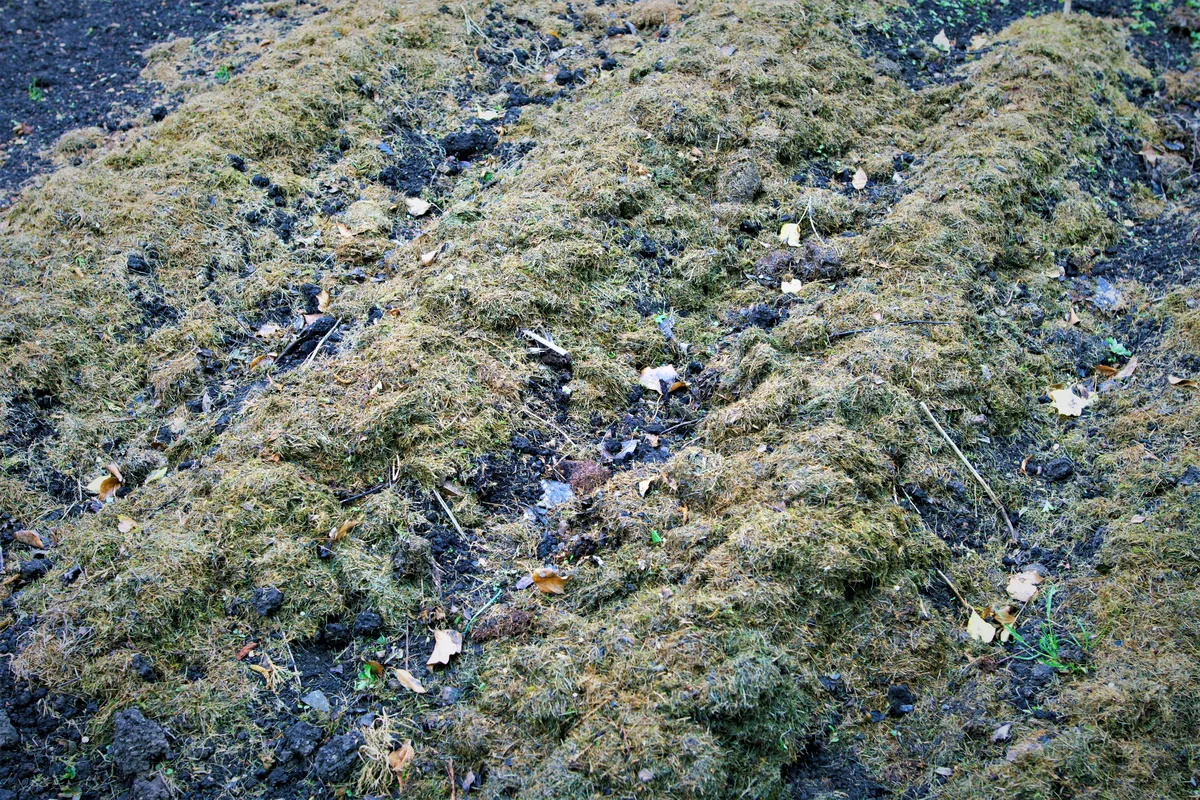
In the garden, plant your potatoes as required, then let them grow up to about 12″. At that stage of growth it is now safe to cover them with a thick layer of grass clippings. If you only have enough to mulch around the base of the plants, do that. If you have more, cover the entire potato planting ground. This mulch will not only keep the sunlight out (nobody likes green potatoes), it will also nourish your growing spuds with nitrogen, potassium and phosphorus.
Irrigation and rain will mat the grass clippings, turning the mulch into a dense mass. At the time of harvesting, simply pull back the half-decomposed mulch and find your potatoes. These same grass clippings can also serve as winter mulch in other parts of your garden.
All you need to do, is keep the cycle going in order to break your grass clippings down, letting them turn back into soil.
Fertilizing Your Mulched Potatoes
Mulch by itself doesn’t provide enough nutrients for growing crops to thrive, though it is excellent as a weed barrier. If your goal is a bumper crop of spuds, fertilizing is highly encouraged.
One way to do this is to apply a fish emulsion just after sprouts emerge, and once again before the stems produce flowers.
You can also make a powerful liquid compost tea for your growing potatoes, using nothing more than your own compost and water.
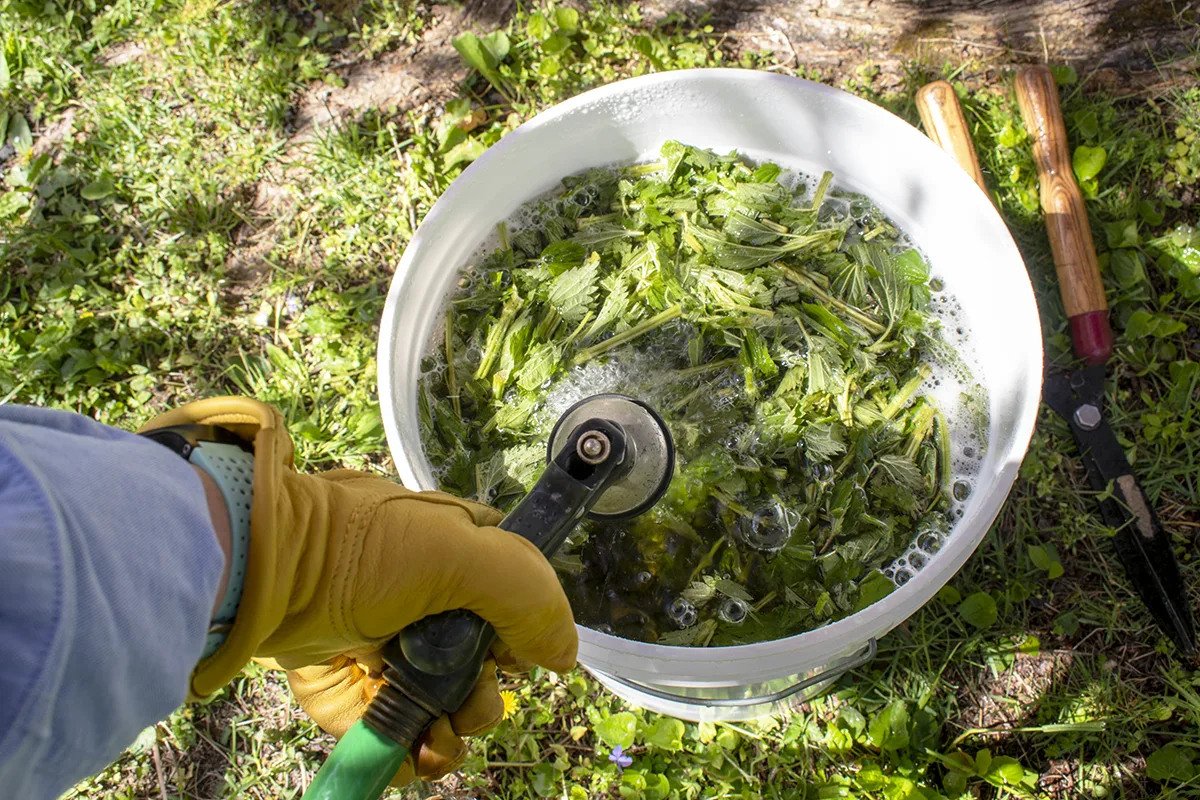
If you have nettles, but no compost, try making a stinging nettle fertilizer tea instead. Potatoes aren’t so picky when it comes to being fed, so long as they are nourished with something other than water.
Commercial fertilizers can also be applied. With organic potatoes in mind, use them sparingly.
Harvesting Potatoes In Mulch
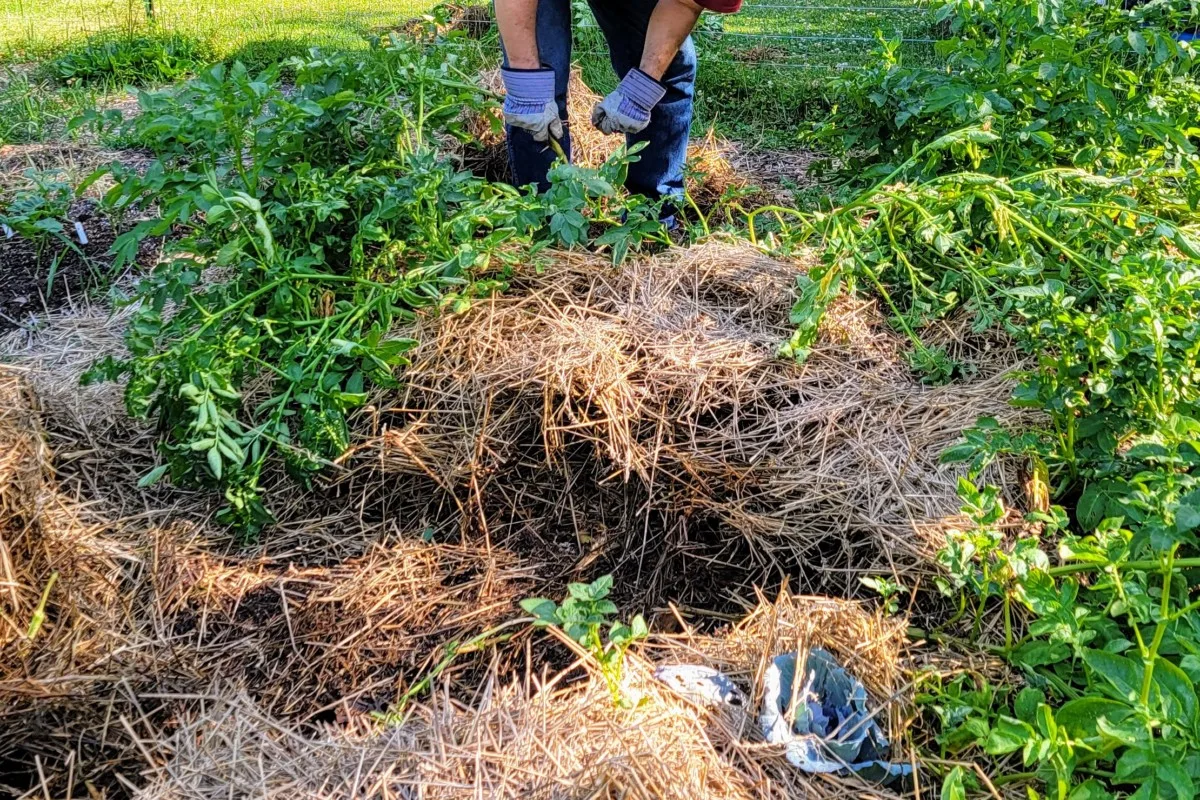
In the no-dig approach to planting potatoes (setting them directly on top of the soil and adding a generous layer of mulch) you’ll have far more time for other gardening chores.
As the season progresses, it’s a good idea to check on a few nests here and there to look at the health of the tubers. The mulch layer should always be several inches thick to prevent potatoes from turning green. At the same time, you can also check for signs of rodent or insect damage.
To harvest new potatoes, pull back the mulch and take what you need by hand: no hoeing is required. Then cover the rest back up. For the final harvest, do exactly the same. See how easy growing potatoes can be?
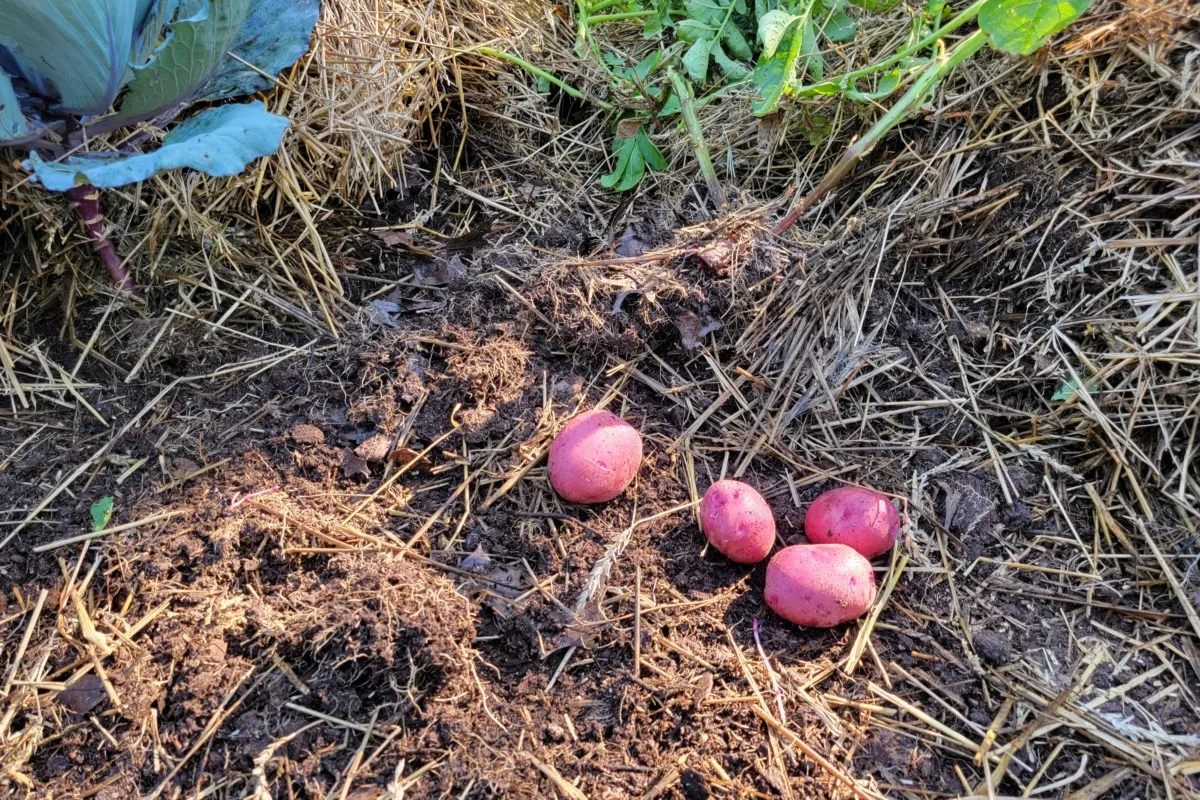
On the darker side, there are a couple of disadvantages to mulching your potatoes.
If you are currently battling the presence of slugs and/or rodents in your garden, mulching your potatoes may lead to further woes.
Slugs are more of a problem in wet, rainy summers, but they are survivors. Although you’ll often find them dining voraciously on tender seedlings, they also have an appetite for decaying matter, which makes them extremely important to the environment (but not so much in your food patch). Given the chance, they will move onto eating tubers, especially those loose spuds in the moist mulch.
Removing slugs by hand is the best way to control them. Or keep some backyard ducks to feed them treats.
Rodents can also sniff out your spuds and raid your growing crop under the camouflage disguise of mulch. In this case, first identify what’s eating them, bring in some traps if appropriate, use raised beds, attract owls and do what you have to reasonably do to keep your potatoes intact.
All in all, the benefits of mulching potatoes far outweigh the risks.
When you mulch potatoes, you’ll encounter far fewer weeds, which means less work for you.
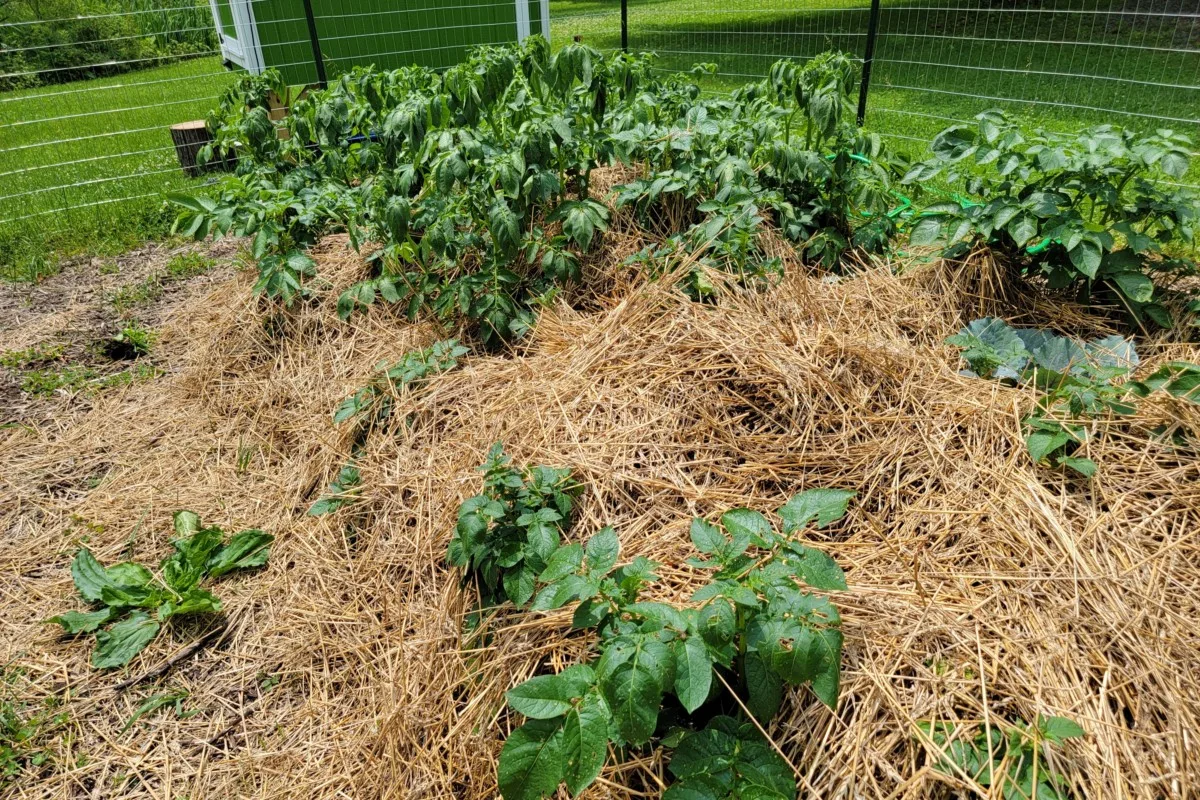
The soil will stay moister, which means you can water less.
The extra layer of darkness prevents the spuds from turning a toxic green.
Plus, harvesting couldn’t be easier. No digging is required.
Start with the best possible potato stock and make sure they are an early-maturing variety for the largest bumper crop of spuds you’ve ever seen – or eaten.

Get the famous Rural Sprout newsletter delivered to your inbox.
Including Sunday musings from our editor, Tracey, as well as “What’s Up Wednesday” our roundup of what’s in season and new article updates and alerts.

